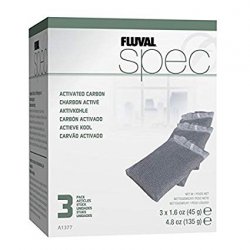I agree with Colin here. I previously suggested aragonite which is the same thing but better as it is calcium and magnesium. Dolomite is also highly effective; I don't like it as a substrate because it is white, but it does work very well in the filter or next to it in a mesh bag as I described somewhere in one of your threads. Some years back our water pH here was below 5, and I had about half a cup of dolomite in the canister filter and the tank pH was stable at 6.4 for some six years before I moved and no longer needed to do this buffering. Coral, etc is calcium (I'm not aware magnesium is significant but will readily bow to that if mentioned).
As for the sodium bicarbonate, this is not safe to use. Dr. Stanley Weitzman wrote about this in an article in TFH in the 1990's I believe, and pointed out that it loses its buffering capability over time, and in any event is harmful to fish long-term. For similar reasons I would not use those linked products on my fish.
As for the sodium bicarbonate, this is not safe to use. Dr. Stanley Weitzman wrote about this in an article in TFH in the 1990's I believe, and pointed out that it loses its buffering capability over time, and in any event is harmful to fish long-term. For similar reasons I would not use those linked products on my fish.


